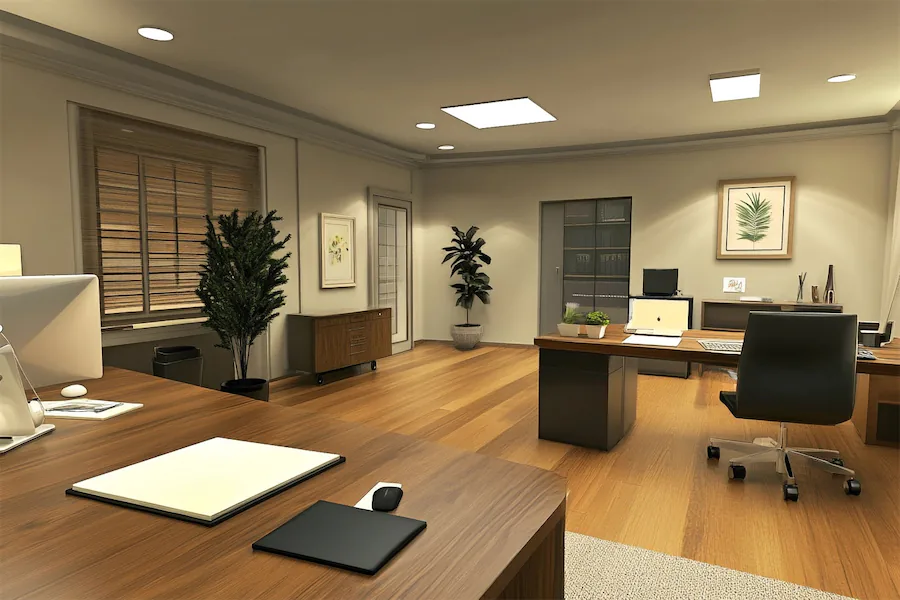Transitional office rooms seamlessly blend traditional and contemporary design elements, creating a balanced and timeless workspace that exudes both comfort and sophistication. This article delves into their origins, key features, applications, considerations for selection, and their relevance in modern interior design.
Introduction to Transitional Office Rooms
Transitional design harmoniously combines the elegance of traditional styles with the clean lines of contemporary aesthetics. In office settings, this fusion results in spaces that are both functional and inviting, appealing to a wide range of preferences.
History and Origins of Transitional Office Rooms
Emerging in the mid-20th century, transitional style arose as a response to the desire for interiors that balance the formality of traditional design with the simplicity of modern trends. This approach integrates classic and contemporary elements, resulting in spaces that are both timeless and adaptable.
Key Features of Transitional Office Rooms
- Neutral Color Palettes: Utilization of whites, creams, and grays to establish a serene and adaptable backdrop.
- Balanced Furnishings: Incorporation of a mix of traditional and modern furniture pieces, emphasizing clean lines and understated elegance.
- Minimal Ornamentation: Focus on simplicity, with limited use of decorative accessories to maintain a clutter-free environment.
- Textural Variety: Employment of diverse textures—such as wood, metal, and fabric—to add depth and interest without relying on bold patterns.
- Functional Layouts: Designing spaces that prioritize practicality and comfort, ensuring an efficient workflow.
Applications of Transitional Office Rooms
Transitional design is versatile and can be applied to various office settings:
- Home Offices: Creating a workspace that feels both cozy and professional, suitable for remote work.
- Corporate Offices: Designing environments that appeal to diverse tastes, fostering inclusivity and comfort.
- Executive Suites: Establishing a sophisticated atmosphere that balances authority with approachability.
Considerations When Choosing Transitional Office Rooms
When designing or selecting a transitional office room, consider the following:
- Cohesive Design: Ensure a harmonious blend of traditional and modern elements to avoid stylistic clashes.
- Quality Materials: Invest in high-quality furnishings that reflect both classic craftsmanship and contemporary design.
- Personalization: Incorporate personal touches, such as artwork or accessories, that align with the transitional aesthetic.
- Lighting: Utilize a combination of natural and artificial lighting to enhance the space’s versatility and ambiance.
- Ergonomics: Select furniture that provides comfort and support, essential for productivity and well-being.
Conclusion
Transitional office rooms offer a harmonious blend of traditional charm and contemporary simplicity, resulting in workspaces that are both elegant and functional. By thoughtfully integrating key elements of both styles, one can create an office environment that is timeless, adaptable, and conducive to productivity.
